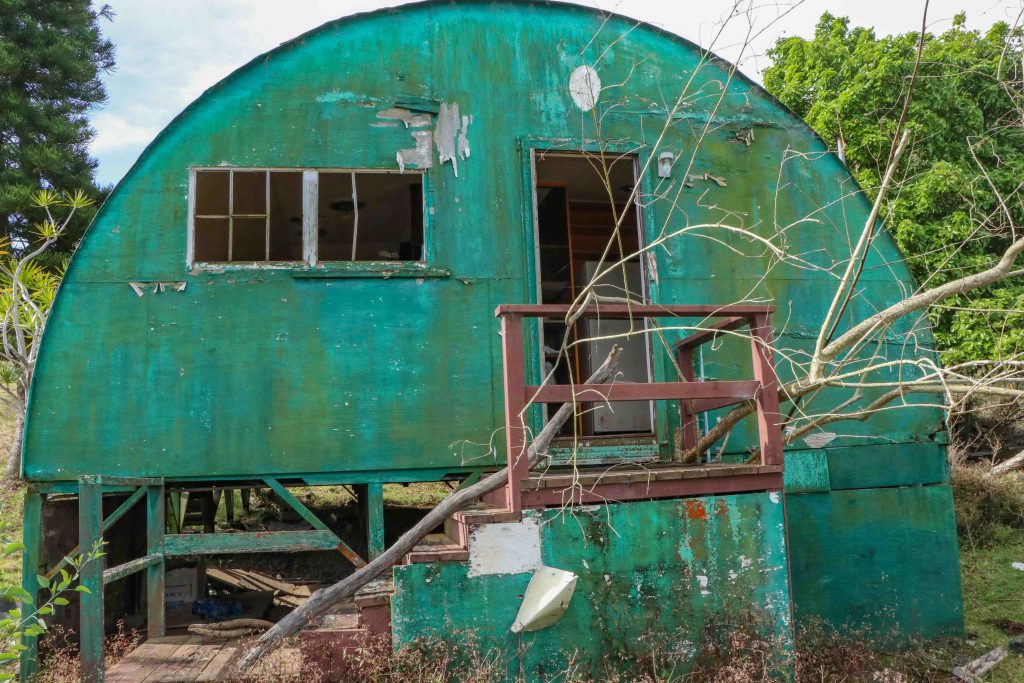$200,000 Hazard Clean-Up Begins at Pu’u Wa’awa’a Forest Reserve on Big Island
Hikers ascending the Pu‘u Wa‘awa‘a cinder cone do not see a pristine forest reserve. They see a half-buried diesel fuel tank, an old Quonset hut and other remnants of former industrial uses of the property scattered across the landscape and near the start of the reserve’s 3.2-mile trail.
These conditions were the focus of a 2009 Environmental Site Assessment, conducted by the US Department of Agriculture’s Forest Service Enterprise Program. In 2019, the Hawai’i State Legislature appropriated $200,000 in funding for the hazardous removal project at the Puʻu Waʻawaʻa Forest Reserve. Hawai’i Island legislators Rep. David Tarnas, Rep. Nicole Lowen, Sen. Lorraine Inouye and Sen. Dru Kanuha advocated for the funding.
“Pu‘u Wa‘awa‘a is an asset of statewide significance, so we really needed to make sure we addressed the concerns here to allow for safe access for recreational purposes,” said Rep. Tarnas, who last week toured the site and hiked the trail.
Dr. Elliott Parsons, of the Department of Land and Natural Resources’ Division of Forestry and Wildlife (DOFAW), detailed the scope of the hazard removal program that is hoped to be finished by the end of 2022.
“There’s a cinder block building, an old Quonset hut, a diesel fuel tank, and the potential of lead paint and asbestos issues, along with trash and debris, that will have to be taken care of,” Dr. Parsons said. “We want to make sure this area is safe and nice and to have people able to utilize the hiking trail and enjoy their time at Pu‘u Wa‘awa‘a.”
You can’t miss Pu‘u Wa‘awa‘a, driving between Kailua-Kona and Waimea. It is the prominent, and typically very green, cinder cone that rises 3,967 feet above sea level between Mauna Kea and Hualālai volcanoes.
Dr. Parsons calls it a remarkable land feature. The cinder cone is an estimated 100,000-years-old, much older than the surrounding lava flows of between 3,000 and 5,000 years-old.
“It’s an amazing view from the top, with views of the 1859 lava flows from Mauna Kea, Mauna Loa and Hualālai,” Dr. Parsons said. “Reforestation efforts over the past 20-years have included the plantings of 40-60 native species. The landscape is enormous.”
Hikers can look to the south-west to a State Wildlife Sanctuary that supports numerous
Hawaiian honeycreepers like, ‘apapane, ‘i‘iwi, and ‘amakihi. The diverse, restored forest near
the summit of the cone includes koa, māmane and kolea.
“It’s a great place to recreate, and hiking on the trail is really good exercise,” Dr. Parsons said. “I try to come up here once a week, as it’s a really special place with a lot of cultural significance as well.”
Rep. Tarnas said he hopes the cinder block building might be able to be repurposed, depending on
findings about lead paint and asbestos.
“Pu‘u Wa‘awa‘a has historical and cultural significance, in addition to its natural resource values,” Rep. Tarnas said. “There are numerous pre-contact stories about this place and post-contact stories that have been captured as oral histories about the region’s ranching heritage.”
An active cattle ranch is still in operation at the base of the cinder cone. Visitors will likely see many cows, sheep and goats, which are not native, and eventually will be kept out of sensitive natural areas by additional fencing.



















